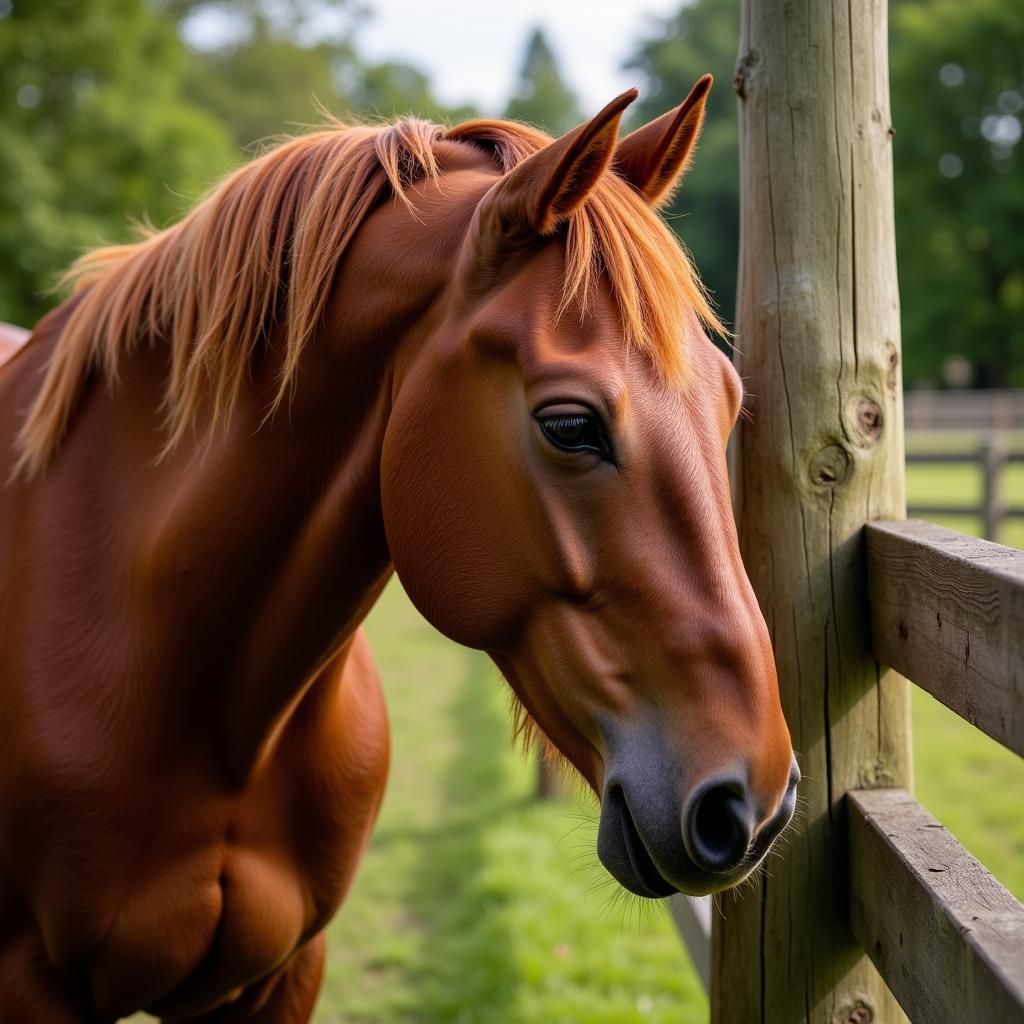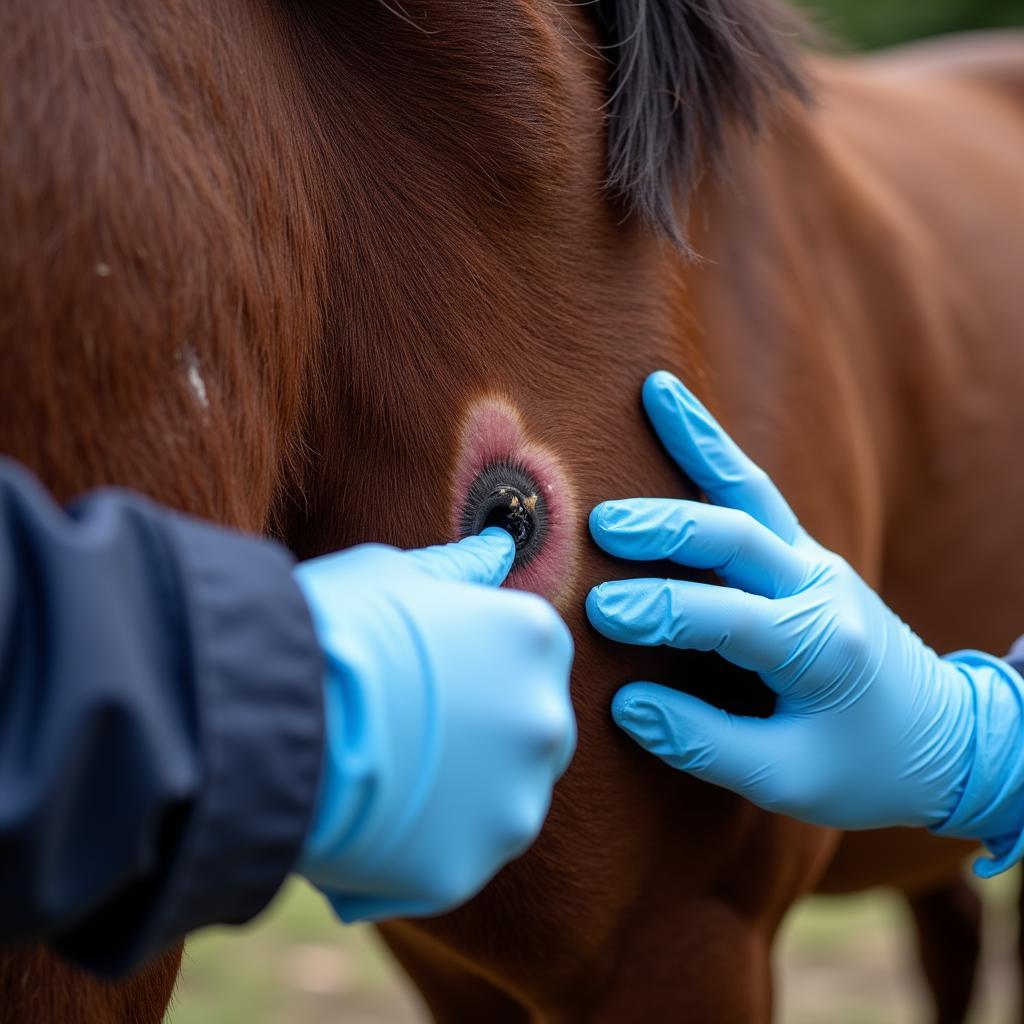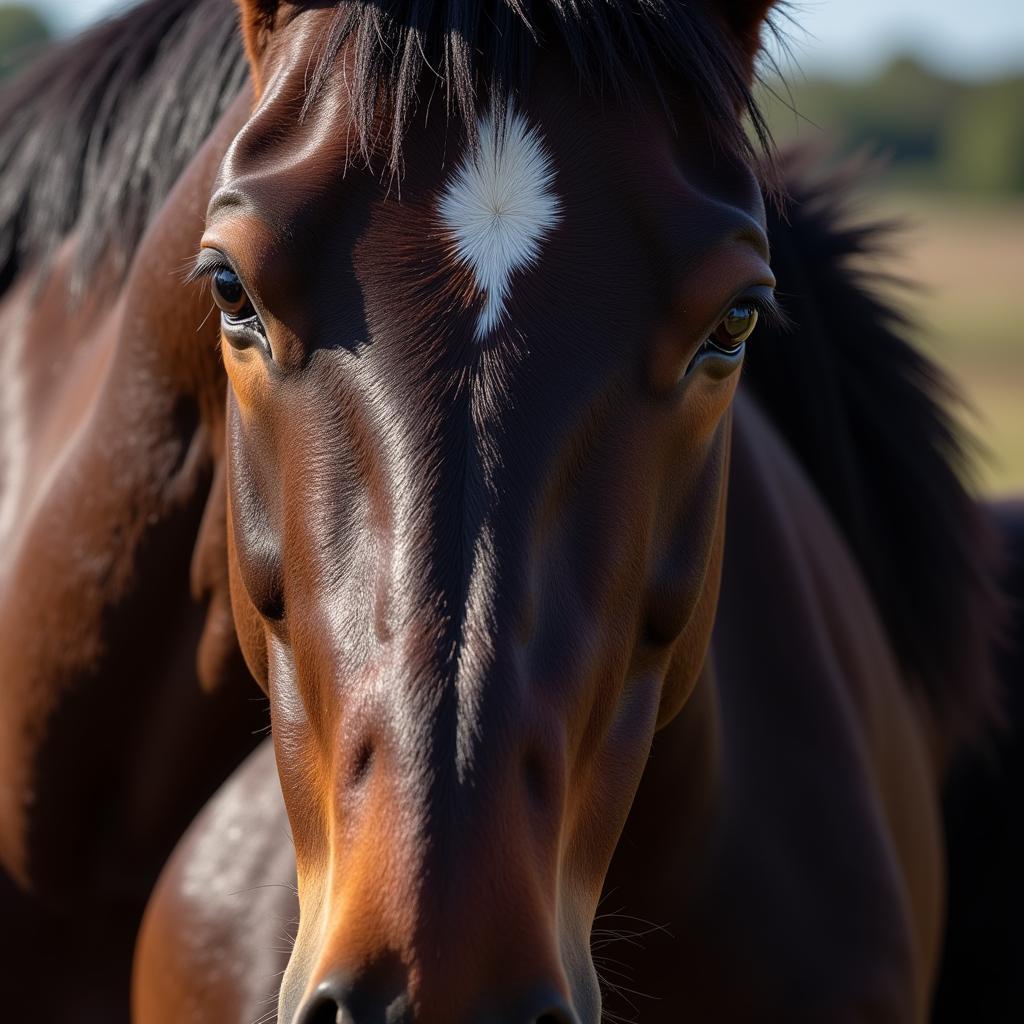Dandruff in horses, while seemingly a minor concern, can often be a symptom of a larger problem: horse lice infestation. These tiny parasites can wreak havoc on your equine companion’s coat and skin, leading to discomfort, itching, and even hair loss. Understanding the causes, symptoms, and treatment options for both dandruff and horse lice is crucial for any horse owner committed to their animal’s well-being.
What Causes Dandruff in Horses?
Dandruff, scientifically known as seborrhea, manifests as flaky, white or grayish scales on your horse’s coat and skin. While dry skin due to environmental factors can contribute to dandruff, the presence of horse lice is a significant culprit.
These minuscule insects thrive in a horse’s coat, feeding on their skin and causing irritation. This irritation leads to excessive skin cell production and shedding, resulting in the visible flakes we recognize as dandruff.
 Horse Scratching on Fence
Horse Scratching on Fence
Recognizing the Signs of Horse Lice
Identifying horse lice infestation early is key to preventing further discomfort for your horse and potential spread to other equines. Here are some telltale signs to watch out for:
- Visible Lice: While small, adult horse lice are visible to the naked eye. They appear as tiny, grayish-brown insects crawling on the horse’s skin or clinging to hair shafts.
- Excessive Scratching and Rubbing: Horses with lice will frequently rub against objects or use their teeth to scratch, attempting to relieve the intense itching caused by the lice bites.
- Hair Loss and Patchy Coat: As lice infestation progresses, hair loss can occur, leading to a patchy or rough-looking coat.
- Skin Lesions and Infections: Constant scratching can cause open sores and lesions, making the horse susceptible to secondary bacterial or fungal infections.
Treating Horse Lice and Dandruff: A Multifaceted Approach
Addressing both the underlying lice infestation and the resulting dandruff requires a comprehensive treatment plan:
- Insecticidal Treatments: Several effective insecticidal shampoos, sprays, and pour-on solutions are available specifically formulated for horses. Consult your veterinarian to determine the most suitable product and treatment regimen for your horse’s age, health status, and the severity of the infestation.
- Environmental Control: Thoroughly cleaning and disinfecting all grooming tools, stable blankets, and any surfaces your horse comes into contact with is crucial to prevent re-infestation.
- Quarantine: If you have multiple horses, quarantine the affected horse(s) to prevent the spread of lice.
“Treating the environment is just as important as treating the horse itself,” advises Dr. Emily Carter, DVM, specializing in equine dermatology. “Lice can linger in bedding, brushes, and even on fences, leading to reinfestation if not addressed.”
 Veterinarian Examining Horse Coat for Lice
Veterinarian Examining Horse Coat for Lice
Preventing Future Outbreaks: Proactive Horse Care
Prevention is always better than cure. Incorporate these practices into your regular horse care routine to minimize the risk of dandruff and horse lice:
- Regular Grooming: Grooming your horse daily not only helps maintain a healthy coat but also allows you to spot any early signs of lice or skin issues.
- Quality Nutrition: A balanced diet rich in essential vitamins and minerals supports a healthy immune system and skin condition, making your horse less susceptible to parasites.
- Parasite Control Program: Consult your veterinarian to establish a comprehensive parasite control program that includes regular deworming and, if necessary, seasonal insecticidal treatments.
Frequently Asked Questions:
Can I use human dandruff shampoo on my horse?
It’s not recommended to use human shampoos on horses as their skin pH and sensitivities differ significantly. Always opt for equine-specific products formulated for their unique needs.
How long does it take to get rid of horse lice?
Eliminating horse lice typically requires multiple treatments spaced 7-14 days apart to target lice at different life cycle stages.
Can horse lice infest humans?
Rest assured, horse lice are species-specific and cannot live on humans.
Seeking Expert Advice: Your Partner in Equine Well-being
At Justus Horses USA, we are dedicated to providing you with the knowledge and resources to ensure your equine companion’s health and happiness. For personalized advice on horse lice treatment and prevention strategies, contact us at Phone Number: 0772127271, Email: [email protected], or visit our facility at QGM2+WX2, Vị Trung, Vị Thuỷ, Hậu Giang, Việt Nam. Our dedicated team is available 24/7 to assist you.
 Healthy Horse with Shiny Coat
Healthy Horse with Shiny Coat
For further reading on maintaining your horse’s mane and tail health, we recommend checking out our article on shampoo horse mane.